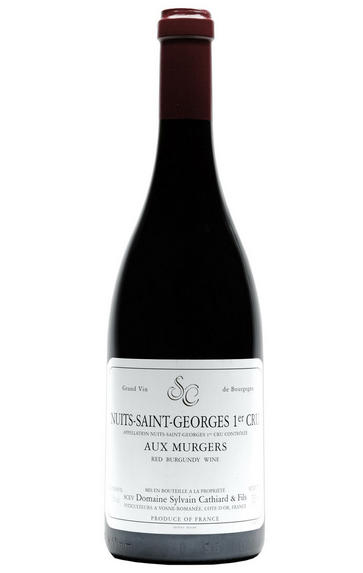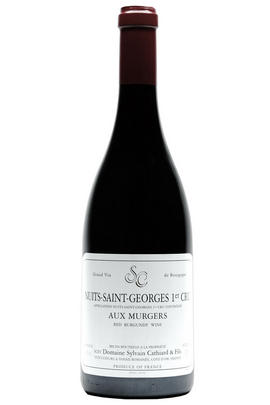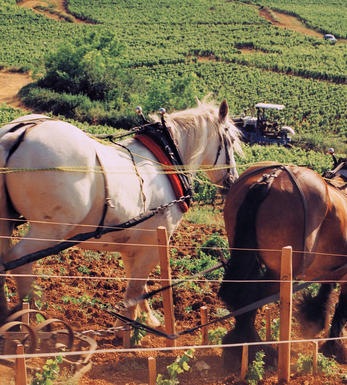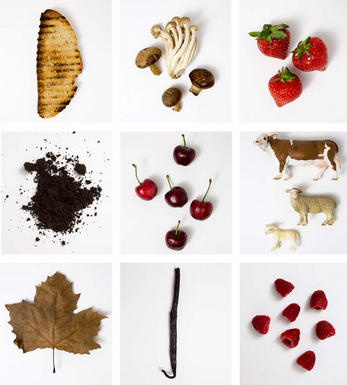
2011 Nuits-St Georges, Aux Murgers, 1er Cru, Domaine Sylvain Cathiard, Burgundy

Critics reviews
Jancis Robinson MW - jancisrobinson.com - Jan 2013
About this WINE

Domaine Sylvain Cathiard
Sylvain Cathiard’s grandfather, a foundling from Savoie, came to Burgundy and found work with Domaine de la Romanée Conti (DRC) and Lamarche, subsequently buying a few parcels of vineyards for himself. His son André Cathiard began to bottle some of the crop.
In due course Sylvain began work with his father but then separated to start his own small domaine, until on his father’s retirement in 1995, Sylvain could take back the family vineyards on a renting agreement. He has now been joined by his son Sébastien, and a spacious new cellar is currently under construction.
The Cathiards have 5.5 hectares of vineyards in Vosne-Romanée, Nuits-St-Georges and Chambolle-Musigny, including tiny holdings in Clos de Vougeot and Romanée-St-Vivant. A recent addition (from 2006) to the range is the Nuits-St-Georges Aux Thorey.
This is not a complicated domaine: the vines are looked after meticulously with the fruit being sorted on a table de tri and destalked. After fermentation the wines go into barrel, with 50 per cent new oak for the village wines and 100 per cent for premier cru and above. Most of the barrels come from one cooper, Rémond, albeit with the wood sourced from different forests. The wines in their youth have an exceptional energy and purity of fruit.
Jasper Morris MW, Burgundy Wine Director and author of the award-winning Inside Burgundy comprehensive handbook.

Nuits-Saint Georges
Originally known as Nuits, or even Nuits-sous-Beaune, the town was happy to add the name of its finest vineyard, Les St Georges, in the 19th century. There are no Grands Crus, but many fine Premier Cru vineyards, the mayor of the time – Henri Gouges – preferring not to single out any vineyard for the highest status.
The wines of Nuits-St Georges vary according to their exact provenance. Those of the hamlet of Prémeaux, considered to be part of Nuits-St Georges for viticultural purposes, are often on the lighter side.The richest and most sought-after are those just south of Nuits-St Georges such as Les Vaucrains, Les Cailles and Les St Georges itself. The third sector, including Les Murgers, Les Damodes and Les Boudots are at the Vosne-Romanée end of the village, and demonstrate some of the extra finesse associated with Vosne.
Several domaines (Gouges, Rion, Arlot) now produce a white Nuits-St Georges from Pinot Blanc or Chardonnay.
- 175 hectares of village Nuits-St Georges
- 143 hectares of Premier Cru vineyards (20 in all). Best vineyards include Les St Georges, and Clos des Argillières and Clos de la Maréchale in Prémeaux
- Recommended producers: Gouges, Rion, Liger Belair, Potel
- Recommended restaurant : La Cabotte (small but stylish)

Pinot Noir
Pinot Noir is probably the most frustrating, and at times infuriating, wine grape in the world. However when it is successful, it can produce some of the most sublime wines known to man. This thin-skinned grape which grows in small, tight bunches performs well on well-drained, deepish limestone based subsoils as are found on Burgundy's Côte d'Or.
Pinot Noir is more susceptible than other varieties to over cropping - concentration and varietal character disappear rapidly if yields are excessive and yields as little as 25hl/ha are the norm for some climats of the Côte d`Or.
Because of the thinness of the skins, Pinot Noir wines are lighter in colour, body and tannins. However the best wines have grip, complexity and an intensity of fruit seldom found in wine from other grapes. Young Pinot Noir can smell almost sweet, redolent with freshly crushed raspberries, cherries and redcurrants. When mature, the best wines develop a sensuous, silky mouth feel with the fruit flavours deepening and gamey "sous-bois" nuances emerging.
The best examples are still found in Burgundy, although Pinot Noir`s key role in Champagne should not be forgotten. It is grown throughout the world with notable success in the Carneros and Russian River Valley districts of California, and the Martinborough and Central Otago regions of New Zealand.


Buying options
Add to wishlist
Description
The palate of this Aux Murgers is exceptionally dense, hiding a wealth of fruit in the background, including raspberries and redcurrants. The finish displays fine tannins along with good acidity.
Jasper Morris MW, Berrys' Burgundy Director 2011 is the first vintage made by Sébastien Cathiard, son of Sylvain. There are no plans to change the successful style of Cathiard père, but there are bound to be differences in nuance with a different hand on the tiller. The wines once again have the magical perfumed Cathiard imprimatur but is there possibly a greater sense of precision in the definition of each vineyard site. Sadly the 2011 crop is a touch smaller even than 2010.
wine at a glance
Delivery and quality guarantee